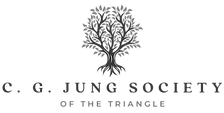Date
- Oct 22 2022
- Expired!
Time
UTC-4- 3:30 pm - 5:00 pm
Local Time
- Timezone: America/New_York
- Date: Oct 22 2022
- Time: 3:30 pm - 5:00 pm
Speaker
- Ken Turner
Organiser

C. G. Jung Society Of The Triangle
Website
https://jungian.directory/related_organisation/c-g-jung-society-of-the-triangle/Numbers as Archetypes
As least as far back as Plato, Numbers have (if you will forgive the contradiction) embodied the undeniable archetype: they are certainly not physical objects, but they are undeniably real and are only “observable” on the intellectual level. 2 + 3 is 5, like it or not. Real, physical entities are not neat or certain: 3 pints of alcohol and 2 pints of water, mixed together do not make 5 pints of liquid.
But numbers are not only intellectual in nature – they have a feeling dimension as well. One and Two feel different. There’s a folk song with the lines: “Three, three, the rivals, Two, two, the little white boys, dressed all in green-o, One is one and all alone and evermore shall be so..
Indeed, numbers are symbolic: they carry chains of associations which make each one very individual and some remarkable people can see this instantly. The most famous example of this is theHardy Ramanujan number: 1729. Hardy was a professor of mathematics at Cambridge University and Ramanujan was a brilliant, self taught Indian scholar whom Hardy had discovered and invited to England. The English climate was not good to Ramanujan and he became ill. Hardy visited Ramanujan in the hospital. When Ramanujan heard that Hardy had come in a taxi he asked him what the number of the taxi was. Hardy said that it was just a boring number: 1729. Ramanujan replied that 1729 was not a boring number at all: it was a very interesting one. He explained that it was the smallest number that could be expressed by the sum of two cubes in two different ways.
Even those of us who are not gifted with such insights can observe that we are ‘wired’ to like “three part lists” - 3 wise men, Father, Son, and Holy Ghost, Winken, Bliken, and Nod, and many other trinities. Then there are 3 classical elements, the 4 Jungian functional types, the 7 class planets, etc.
In this Salon, we will explore the many and varied facets of the number archetypes, hopefully with much audience participation.

